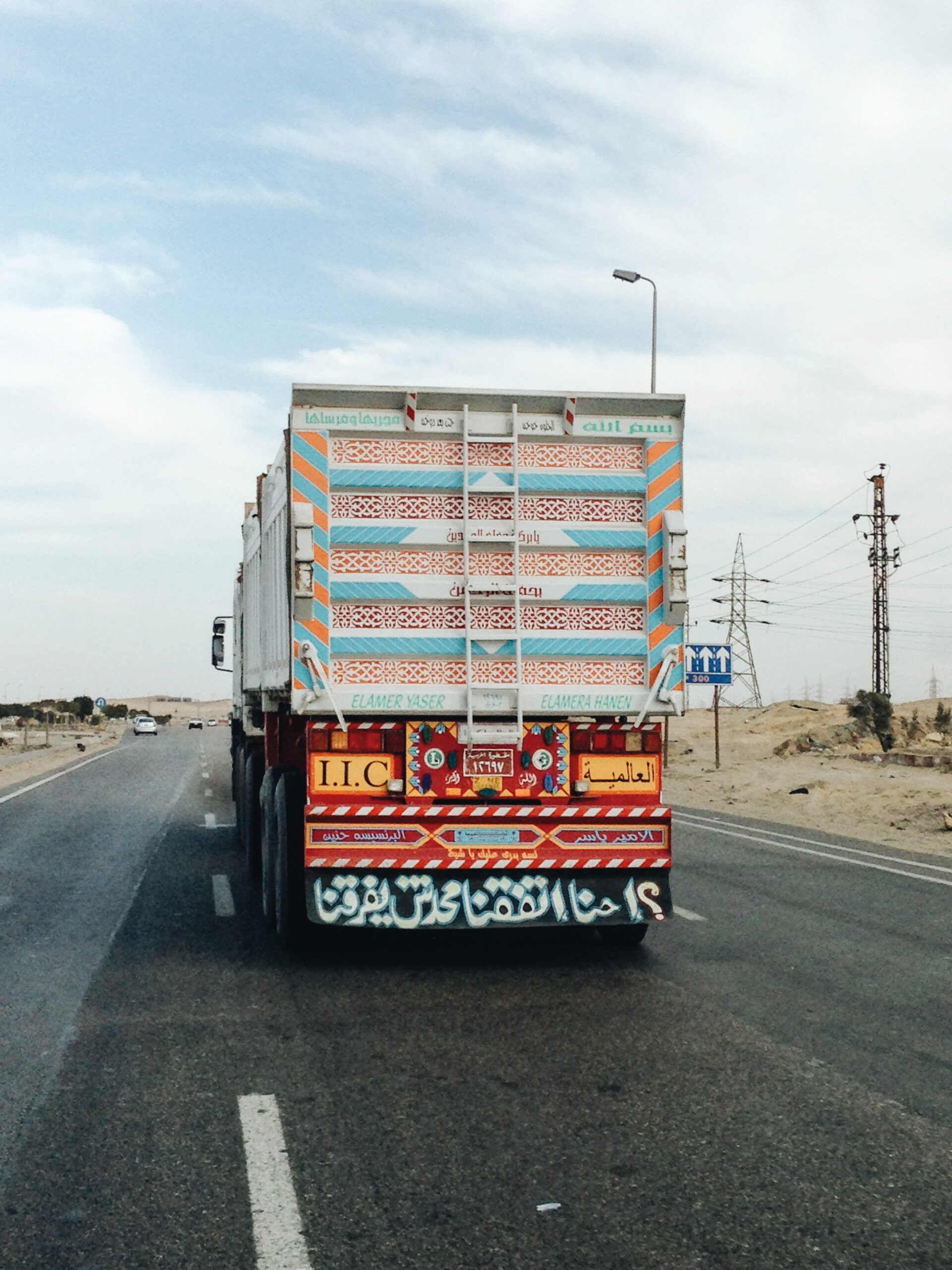Buying a truck is expensive in Egypt, not something many can afford, and therefore the object of great envy. The truck represents a means, no matter how meagre, of economic advancement. While in many cases drivers are employed by the owner of the truck, regardless of ownership and financial liability, driving a truck in Egypt is a dangerous and risky business, both economically and physically. Egyptian roads and motorways are among the most dangerous in the world, and life and limb are at stake on every trip, along with the investment of the truck itself.
The truck is the driver’s most prized possession; it is his source of livelihood and it is how he feeds his children. It is also his eternal companion. Egyptian truck drivers are not minimalists, and it is rare to see a truck of any size that is not richly decorated. Driving through Egyptian roads, the common practice of decorating trucks, with calligraphy, stickers and all manner of other object, is hard to miss. Serving several functions, the decorations’ first objective is safety and protection from the evil eye, hence the use of written verses from the Qur’an or Bible, or invocations for protection through the Prophet, saints or other holy persons. Decorative stickers spell out such invocations; specific quasi-religious themes, such as the Hand of Fatima, are represented across a range of mediums; and physical objects are also employed, like the hanging of a blue eye stone, prayer beads or a baby’s shoe. All are attempts to protect the truck and its driver from the dangers of the road, envy and the misfortunes of destiny.
Beyond the appeals to higher powers and the workings of fate, purely decorative motifs also abound. Illustrations and stickers of Disney characters, juxtaposed against the rough worn out trucks, are always ironic, while giant illustrations or sticker collages of fierce animals, like lions or eagles, promote a masculine aesthetic. There are also standard auto signage staples everywhere, like stop signs and hazard triangles.

Noha Zayed

Noha Zayed
Despite there being a taxonomy and catalogue of repeated or copied motifs, patterns and expressions, no two trucks are the same. This shows how the truck itself is a medium for self-expression. It is a chance for the driver’s socioeconomic reality to be presented through the mouthpiece of the driver’s heroic alter-ego, producing writing which includes not only verses from the Qur’an, hadiths and other expressions of faith – religion being the most popular cloth to wear – but also movie or song quotes, witty declarations, the nicknames of his children, his stances on love and women, a name he’s given the truck (‘the confused songbird’ and ‘monster of the road’ are some examples), statements reflecting the confidence of his own grandeur, declarations of advice, warnings or anything else that can reflect the driver’s philosophy, beliefs, dreams, ethics, or grievances. In a way, it becomes his public voice.

Noha Zayed

Noha Zayed

Noha Zayed

Noha Zayed

Noha Zayed

Noha Zayed

Noha Zayed
For myself, I imagine a further function, unconnected to the driver, one that I can’t quite put my finger on. From personal experience, it seems that just at the moment I need to know it, be reminded of it, be told of it – I look up and there it is, the message I was missing: a verse of scripture, a line of poetry, a quotation or a time-worn piece of advice. Serendipity always seems to rule the road – visually amusing, thought-provoking fun that always has me chasing them down the motorways to get a photograph.